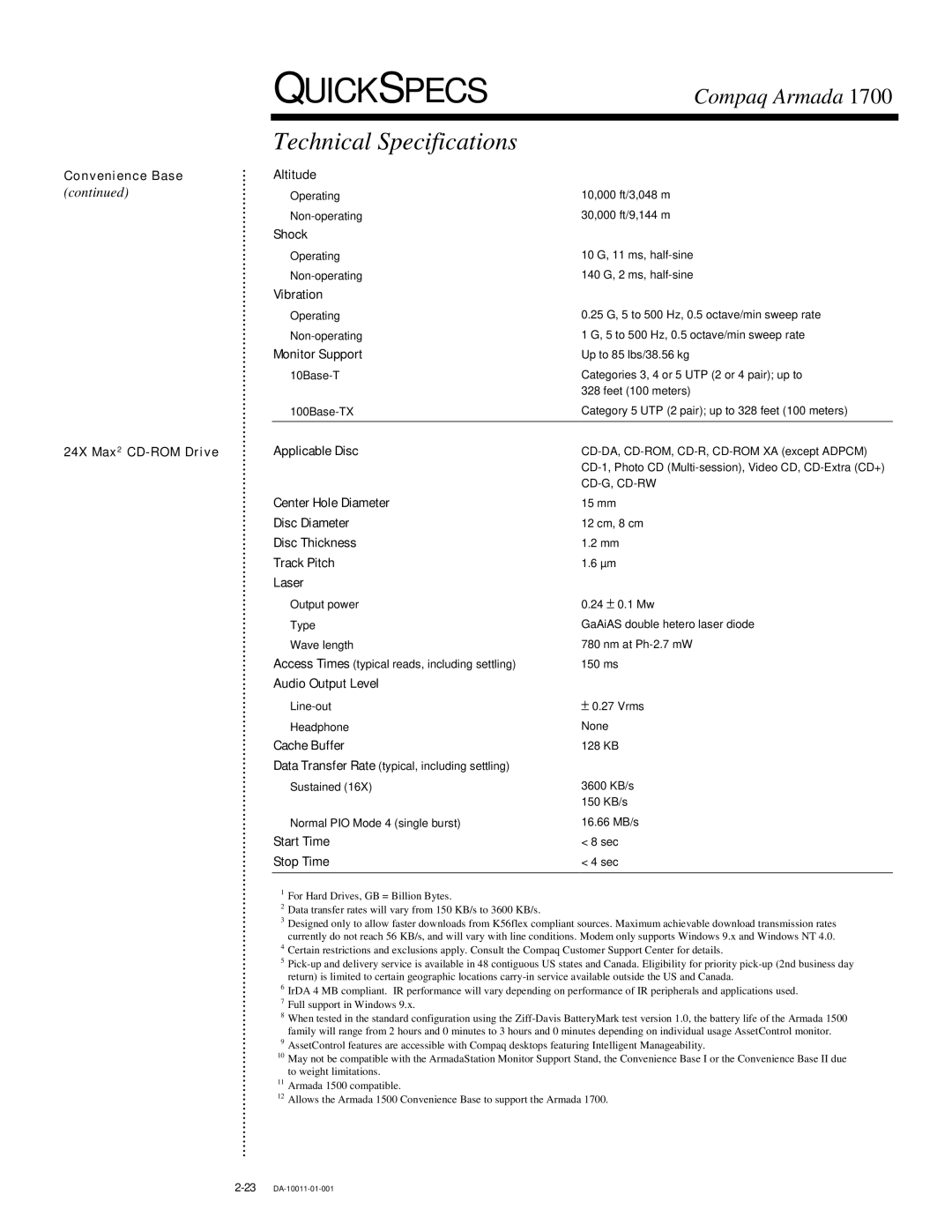1700 specifications
The Compaq 1700 series is a noteworthy line of portable computing devices released in the late 1990s, aimed primarily at professionals seeking an efficient and reliable laptop for work and personal use. Its introduction was a significant moment in the evolution of notebook PCs, blending portability with a powerful performance that catered to the needs of a growing mobile workforce.One of the defining features of the Compaq 1700 was its lightweight design, making it an ideal choice for users who needed to transport their machines frequently. Weighing just around 5.5 pounds, the laptop offered a compromise between performance and portability. The device boasted a 14.1-inch TFT display with a resolution of 1024 x 768 pixels, providing clear and vibrant visuals. This screen size was particularly popular during its time, allowing users to comfortably view documents and images without compromising on screen real estate.
The Compaq 1700 was powered by Intel's Pentium II processor, with options ranging from 233 MHz to 400 MHz. This enhanced processing capability allowed users to smoothly run productivity applications, spreadsheets, and even some early graphical software, paving the way for a more versatile computing experience. The machine came with 32MB of RAM, expandable to 128MB, catering to multitasking needs as software demands increased.
Storage options were also significant, with the Compaq 1700 featuring a 4.3GB hard drive—an impressive capacity for that period. Additionally, it included a CD-ROM drive and a 3.5-inch floppy disk drive, ensuring compatibility with a wide variety of data and applications. For connectivity, the laptop had built-in modem capabilities, allowing dial-up internet access and networking options, which was essential during the internet boom of the late 1990s.
Battery life was also a crucial characteristic of the Compaq 1700. It utilized a lithium-ion battery, which provided around 3 hours of usage on a full charge, allowing for ample productivity while on the go. The inclusion of various ports, such as USB, parallel, and serial ports, made it adaptable for connecting external devices, enhancing its usability.
In conclusion, the Compaq 1700 series embodied the spirit of its era, offering a blend of portability, performance, and essential features for mobile users. It marked a significant step forward in laptop technology and left an enduring legacy in the world of personal computing, foreshadowing future advancements that would come in the realm of mobile technology. The Compaq 1700 not only served its users effectively during its time but also contributed to the evolution of laptops into the sophisticated devices we utilize today.
